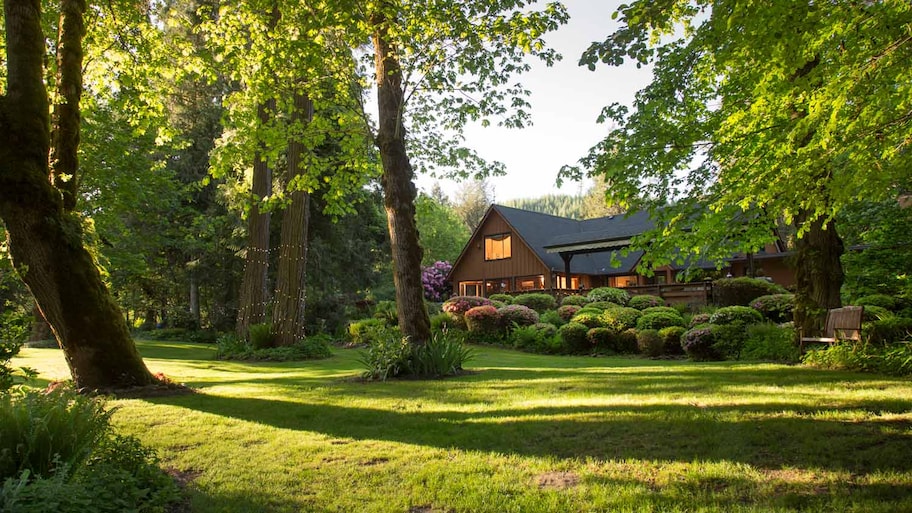Why You Should Avoid Bradford Pear Trees—and What to Plant Instead
While pretty, think twice before planting one of these trees


Bradford pear trees are considered an invasive species that harm native plants.
Due to their invasive nature and other issues, some states have banned these trees from being planted.
The best way to remove a Bradford pear tree is to cut down the tree and remove the stump.
Homeowners who want to plant flowering trees should consider planting redbud, fringe, or sweet crabapple trees.
If you have a pretty white flowering tree in your yard that often smells like rotting fish, chances are you have a Bradford pear tree. These trees were popular to plant at one time due to their affordability but now are seen as more trouble than they’re worth.
So, apart from the foul smell, why are Bradford trees harmful? Read on to learn about common issues these trees pose and why they’re considered an environmental hazard.
What Are Bradford Pear Trees?
Also known as Pyrus calleryana or the Callery pear, Bradford pear trees are native to Asia and commonly found in the eastern U.S. They’re known for pretty white flowers that bloom in early spring but also have a strong, fishy smell. They grow about 30 to 60 feet in height and have short lifespans, lasting only 15 to 25 years. Today, they are considered an invasive species in many regions.
Reasons to Avoid Bradford Pear Trees

They’re Invasive
Pyrus calleryana is an invasive species that may crowd out native plants due to its ability to grow quickly and thrive in various climates. Because they have dense canopies of blooms, they also block light from reaching other plants and even make it difficult to grow grass. Some states, such as South Carolina and Pennsylvania, have banned Bradford pear trees to protect the area’s native vegetation.
They Have Soft Wood
Another issue with this fast-growing tree is that the wood is soft. That allows it to grow quickly but also makes the tree vulnerable to split due to heavy winds, ice, or snow. The trees tend to split after about 15 years, making this species dangerous in a yard where branches could easily fall on people or damage your home.
They Need Lots of Upkeep
While affordable, Bradford pear trees are not low maintenance. Homeowners must keep up with pruning the top branches to minimize the risk of splitting. The branches of this tree also grow sharply upward, which makes it easier for the tree to split. Bradford pear trees have a short lifespan of up to 25 years, partly due to their inclination to split.
They’re Smelly
Bradford pear trees may look beautiful in bloom, but their pungent smell will quickly change your mind. When the tree is in full bloom in the spring, the flowers emit a rotting fish stench. This is thought to be from trimethylamine and dimethylamine to attract pollinators.
Some May Have Thorns
As if the smell, maintenance, and soft wood weren’t enough to avoid Pyrus calleryana, some species emerge with thorns after cross-pollinating with other plants. These sharp thorns make the trees even more difficult to prune or remove.
How to Get Rid of a Bradford Pear Tree
If you have these trees in your yard already, the best way to remove the tree without spreading it further is by cutting it down. The average cost to remove a tree is $750. Some states even provide incentives for removal, so check with your local government to see if your state participates.
After the tree has been cut down, homeowners should remove or treat the stump with an herbicide to prevent it from sprouting new trees and grind down the stump before placing a new tree in the same spot.
Tree removal is not easy and can be dangerous. Call your local tree removal service for help removing the tree and treating the stump to prevent new growth.
What to Plant Instead
Due to the maintenance issues and its invasive nature, Bradford pear trees are best avoided and may even be banned in your state. The Bradford is one of many options if you want to plant a blooming tree in your yard. Instead, try flowering dogwood, serviceberry, redbud, fringe, sweet crabapple, yellowwood, or sassafras trees.
Frequently Asked Questions
Bradford pear trees bloom in early spring with small white flowers. They typically flower for at least two weeks. In bloom, these trees often emit a foul-smelling odor that’s often compared to rotting fish. Bradford pear trees will sometimes bloom in the fall due to drought or other stress-inducing conditions.
The typical lifespan of a Bradford pear is relatively short, only 15 to 25 years. However, these trees have issues long before their life is over. Due to their soft wood and fast-growing branches, Bradford pear trees often split around 15 years, making them a risk for falling branches and more prone to disease.





- Bradford Pear Tree vs. Dogwood: What’s the Difference?
- 7 Reasons Why You Shouldn't Plant a Tree in Your Yard
- 14 Incredibly Invasive Trees to Avoid Planting on Your Property
- 9 Ways to Protect Your Trees From Winter Storms
- Can You Cut Down a Tree on Your Property?
- When To Cut Down A Tree: 13 Ways To Tell
- Here’s Where To Plant Trees In Your Backyard
- How to Remove a Tree Yourself
- 17 Best Fruit-Bearing Trees to Grow in Your Backyard
- How to Help Your Trees Survive a Drought










